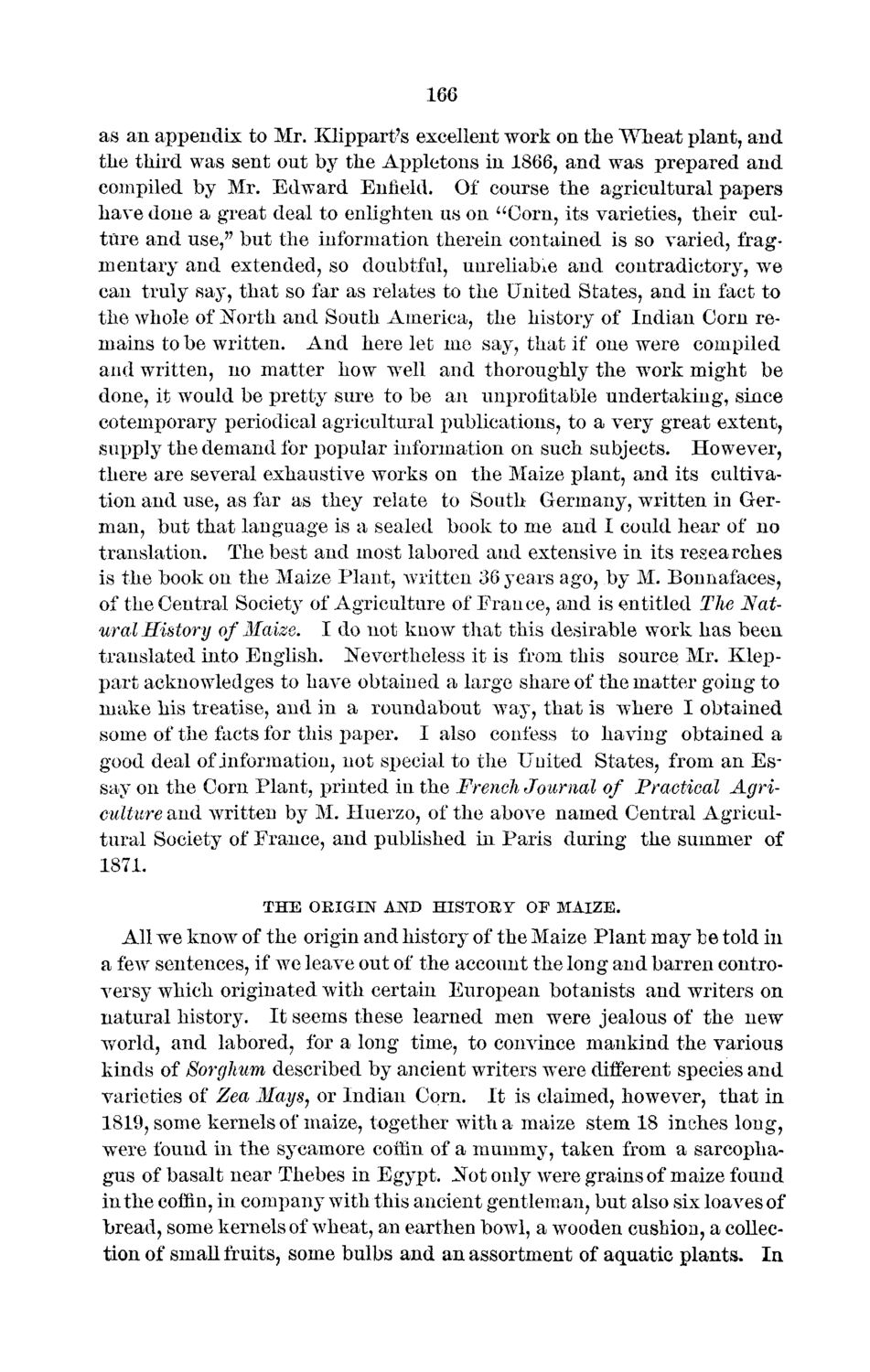| |
| |
Caption: Board of Trustees Minutes - 1872
This is a reduced-resolution page image for fast online browsing.

EXTRACTED TEXT FROM PAGE:
166 as an appendix to Mr. Klippart's excellent work on the Wheat plant, and the third was sent out by the Appletons in 1866, and was prepared and compiled by Mr. Edward Enfield. Of course the agricultural papers have done a great deal to enlighten us on "Corn, its varieties, their culture and use," but the information therein contained is so varied, fragmentary and extended, so doubtful, unreliable and contradictory, we can truly say, that so far as relates to the United States, and in fact to the whole of North and South America, the history of Indian Corn remains to be written. And here let me say, that if one were compiled and written, no matter how well and thoroughly the work might be done, it would be pretty sure to be an unprofitable undertaking, since cotemporary periodical agricultural publications, to a very great extent, supply the demand for popular information on such subjects. However, there are several exhaustive works on the Maize plant, and its cultivation and use, as far as they relate to South Germany, written in German, but that language is a sealed book to me and I could hear of no translation. The best and most labored and extensive in its researches is the book on the Maize Plant, written 36 years ago, by M. Bonnafaces, of the Central Society of Agriculture of France, and is entitled The Natural History of Maize. I do not know that this desirable work has been translated into English. Nevertheless it is from this source Mr. Kleppart acknowledges to have obtained a large share of the matter going to make his treatise, and in a roundabout way, that is where I obtained some of the facts for this paper. I also confess to having obtained a good deal of information, not special to the United States, from an Essay on the Corn Plant, printed in the French Journal of Practical Agriculture and written by M. Huerzo, of the above named Central Agricultural Society of France, and published in Paris during the summer of 1871. THE ORIGIN AND HISTORY OF MAIZE. All we know of the origin and history of the Maize Plant may be told in a few sentences, if we leave out of the account the long and barren controversy which originated with certain European botanists and writers on natural history. It seems these learned men were jealous of the new world, and labored, for a long time, to convince mankind the various kinds of Sorghum described by ancient writers were different species and varieties of Zea Mays, or Indian Corn. It is claimed, however, that in 1819, some kernels of maize, together with a maize stem 18 inches long, were found in the sycamore coffin of a mummy, taken from a sarcophagus of basalt near Thebes in Egypt. Xot only were grains of maize found in the coffin, in company with this ancient gentleman, but also six loaves of bread, some kernels of wheat, an earthen bowl, a wooden cushion, a collection of small fruits, some bulbs and an assortment of aquatic plants. In
| |